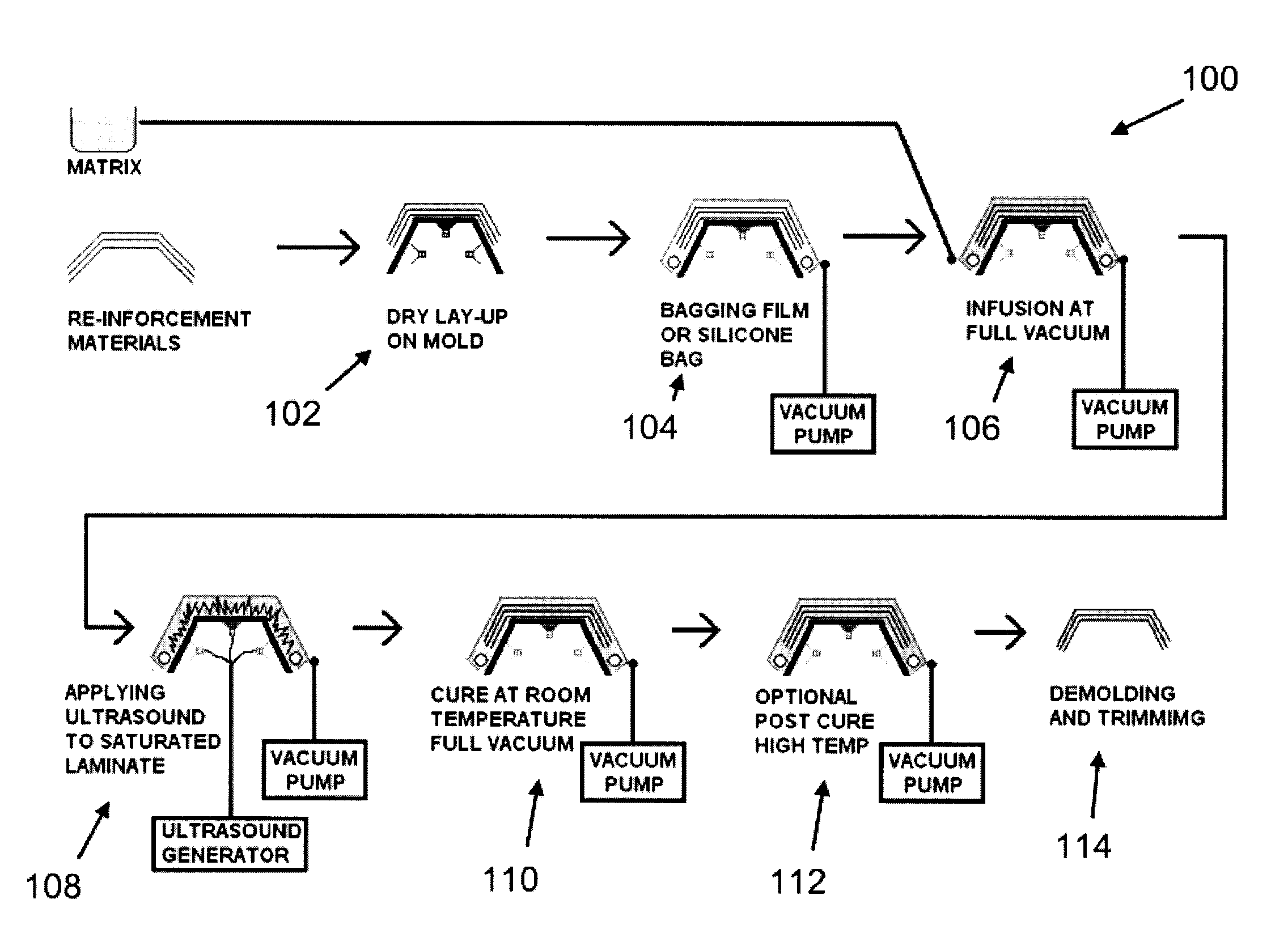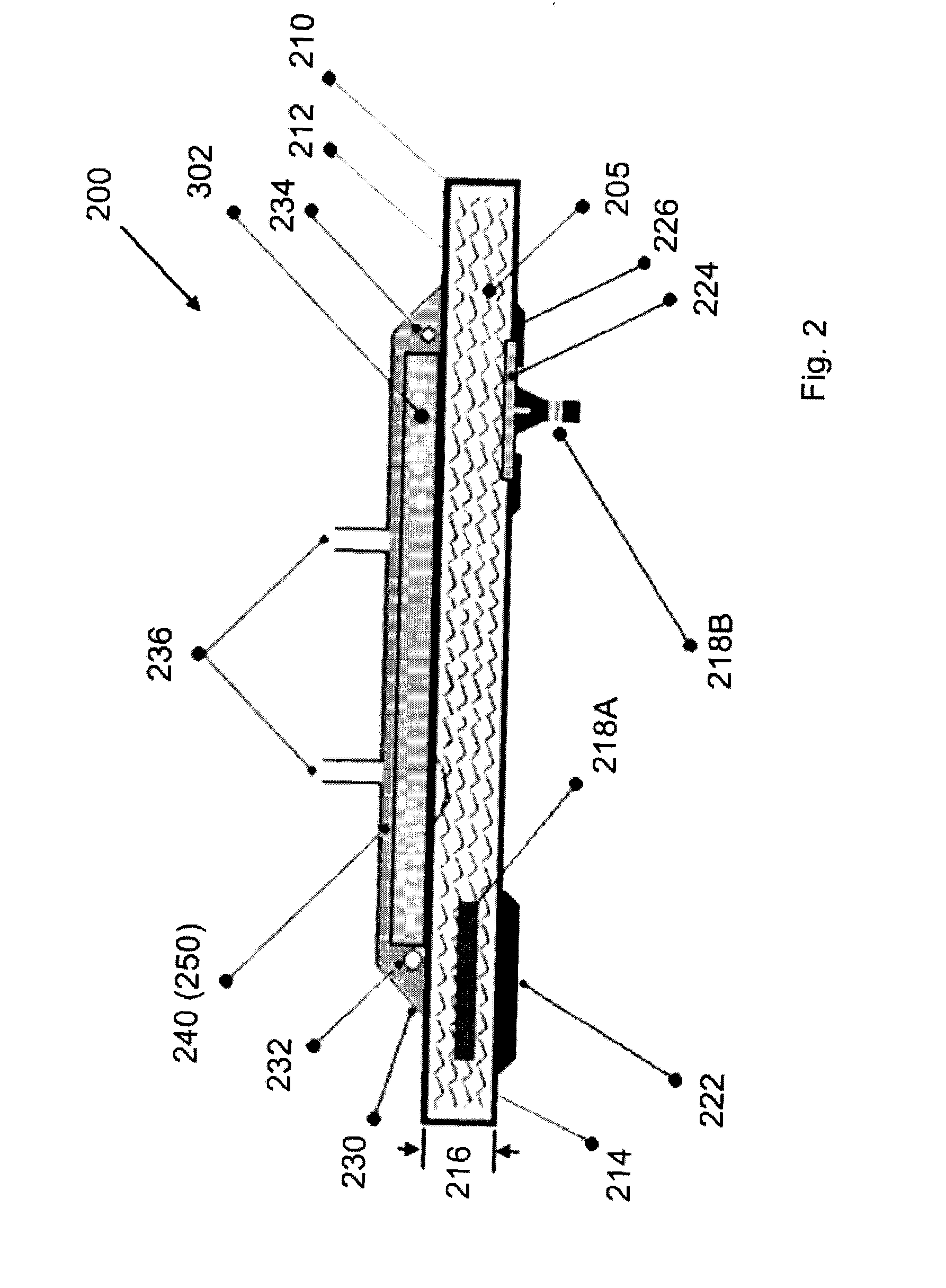Process and Apparatus for Molding Composite Articles
a composite article and process technology, applied in the direction of mechanical vibration separation, manufacturing tools, drawing profiling tools, etc., can solve the problems of porosity of parts made from vartm processes, difficult degassing, and neutral pressure on the bag
- Summary
- Abstract
- Description
- Claims
- Application Information
AI Technical Summary
Benefits of technology
Problems solved by technology
Method used
Image
Examples
Embodiment Construction
[0023]A novel process and related apparatus for molding composite articles will be described hereinafter. Although the invention is described in terms of specific illustrative embodiments, it is to be understood that the embodiments described herein are by way of example only and that the scope of the invention is not intended to be limited thereby.
[0024]Referring first to FIG. 1, a flow-chart depicting an embodiment of a process 100 to mold composite articles in accordance with the principles of the present invention is shown.
[0025]In the present embodiment, the process 100 is mostly based on a A-VARTM process. Hence, the process 100 typically comprises the placement of reinforcing materials on a mold which is in the shape of the desired article (at 102). In the present embodiment, several types of reinforcing materials can be used. For instance, glass fibers, carbon fibers, glass fiber fabric, carbon fiber fabric, etc.
[0026]Next, once the reinforcing materials are properly positio...
PUM
| Property | Measurement | Unit |
|---|---|---|
| Thickness | aaaaa | aaaaa |
| Frequency | aaaaa | aaaaa |
| Vacuum | aaaaa | aaaaa |
Abstract
Description
Claims
Application Information
 Login to View More
Login to View More - R&D
- Intellectual Property
- Life Sciences
- Materials
- Tech Scout
- Unparalleled Data Quality
- Higher Quality Content
- 60% Fewer Hallucinations
Browse by: Latest US Patents, China's latest patents, Technical Efficacy Thesaurus, Application Domain, Technology Topic, Popular Technical Reports.
© 2025 PatSnap. All rights reserved.Legal|Privacy policy|Modern Slavery Act Transparency Statement|Sitemap|About US| Contact US: help@patsnap.com



